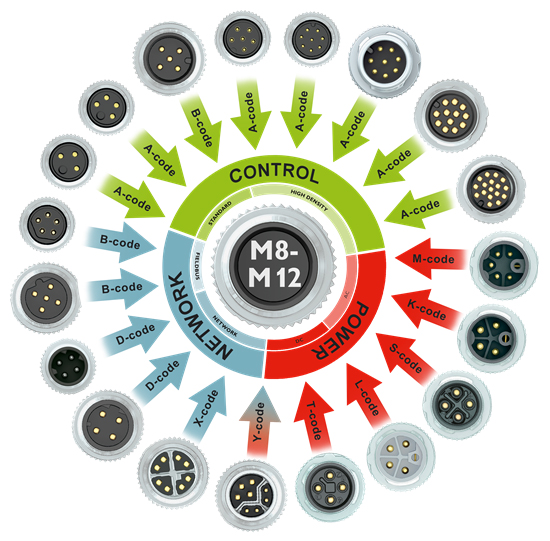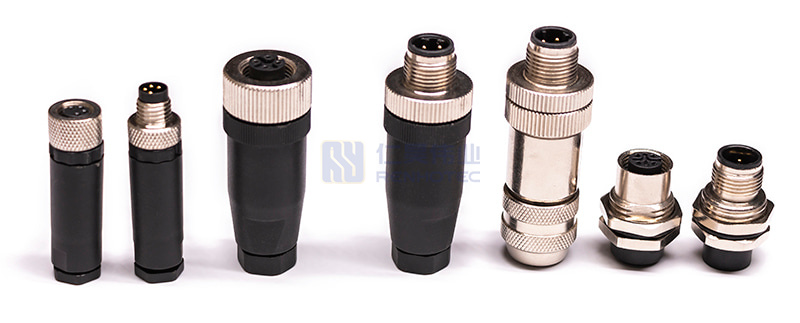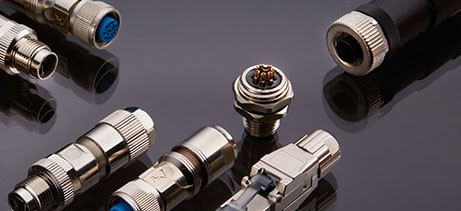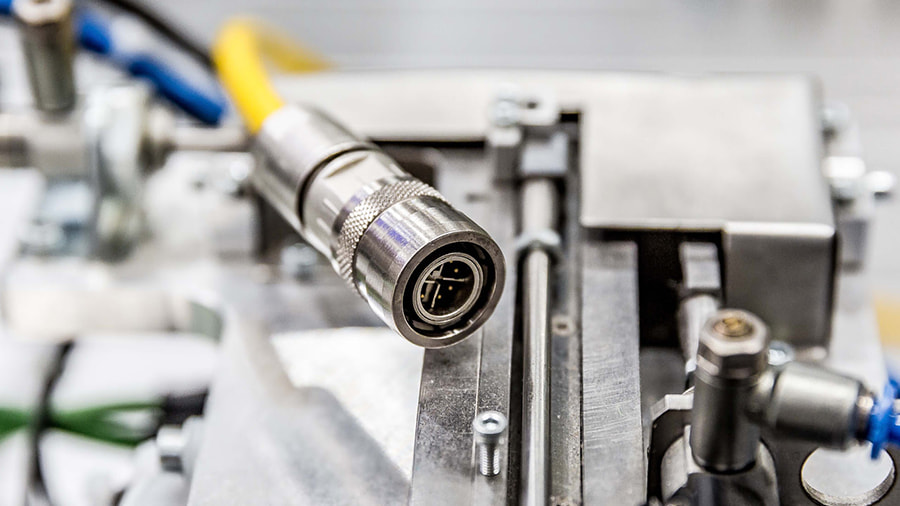M Series Connectors
Are lightweight triplestart ratchet coupling type connectors designed for avionics, aerospace, Harsh Environment Connectors, security, motorsport and heavy duty applications.
Sensor connector M12 and M8 is the most used industrial circular connectors. Technical experts recently shared the selection skills of both. As a leader in industrial aviation plugs, the German Binder Group has worked in circular connectors for 70 years and has become one of the global leaders in circular connectors.
M12 connector thread is M12 * 1, the connection method for the screw connection, protection class IP67. The number of pins 3, 4, 5, 8, 12, 17 pins, product shape with the straight, right angle. M12 industrial connector with cable and without cable models, cable optional PVC (ordinary) or PUR (oil and wear-resistant) material. Cable length is available according to customer’s requirements, this connector has shielding and unshielded function, the connector has excellent waterproof performance.

M8 connector thread is M8 * 1, the connection method is screw connection, protection level IP67. The number of pins is 3 pins, 4 pins, straight, right angle, with cable and without cable, M8 connector cable optional PVC (ordinary) or PUR (oil and wear-resistant) material. Cable length can be customized according to user requirements, excellent waterproof performance.

The M12, M8 industrial circular connectors application areas: widely used in sensors, testing instruments, electronic instruments, electronic machinery, communications, aviation, navigation, computers, LED, automotive, and engineering machinery. Electromechanical, petroleum survey, transmission control system, electrical and electric system, industrial automation, and other fields.
To carry out a specific measurement work, the first thing to consider is the principle of industrial connectors, which requires analysis of several factors to determine. Because, even if the measurement of the same physical quantity, there are a variety of principles of industrial connectors available.
Which principle of industrial circular connector is more appropriate? It is necessary to consider the following specific issues based on the characteristics of the measured and the conditions of use of the connector: the size of the range, the measured location of the connector volume requirements, the measurement method for contact or non-contact, the signal lead-in method, wired or non-contact measurement, the source of the connector domestic or imported, the price can afford. After considering the above issues will be able to determine what type of connector to choose and then consider the specific performance indicators of the connector.

Accuracy is an important performance indicator of the industrial circular connector. It is an important link to the measurement accuracy of the entire system. The higher the accuracy of the connector, the more expensive it is. Therefore, the accuracy of the industrial circular connector as long as the accuracy of the entire measurement system meets the requirements can be, do not have to choose too high.
If the purpose of the measurement is qualitative analysis, the use of high repeatability of the connector can be, should not choose the absolute value of high accuracy; if the quantitative analysis, you must obtain accurate measurement values, you need to use the accuracy level to meet the requirements of the connector.
The linear range of the sensor connector is the range where the output is proportional to the input. Theoretically, within this range, the sensitivity remains constant. The wider the linear range of the sensor connector, the greater the range, and it can ensure a certain measurement accuracy. In selecting sensor connectors, when the type of connector is determined, the first step is to see whether the range meets the requirements.
But in fact, any sensor connector can not guarantee absolute linearity. Its linearity is also relative. When the requirement for measurement accuracy is relatively low, within a certain range, the non-linear error can be smaller sensor connector approximation as linear, which will bring great convenience to the measurement.

The higher the sensitivity of the sensor connector within the linear range of the sensor connector, the better. Because only when the sensitivity is high the output signal value corresponding to the measured change is relatively large, which is conducive to signal to the process.
However, it is worth noting that the high sensitivity of the sensor connector and the external noise unrelated to the measurement is also easy to mix in. After the amplification system, amplification affects the measurement accuracy. Therefore, the sensor connector itself should have a high ratio of signal and noise to minimize the introduction of interference signals from the outside.
The sensitivity of the sensor connector is directional. When the measured is a one-way quantity, and its directional requirements are high, then you should choose other directional sensitivity of small sensor connectors. If the measurement is a multidimensional vector, the smaller the sensitivity of the sensor connector, the better.
Sensor connector after a while, its ability to maintain its performance without change is called stability. Factor affecting the long-term stability of the sensor connector, in addition to its structure, the main sensor connector is the use of the environment. Therefore, to make the sensor connector have good stability, it must have a strong ability to adapt to the environment.
Selecting sensor connectors before the use of its environment should be investigated, and according to the specific use of the environment, select the appropriate sensor connector or take appropriate measures to reduce the impact of the environment. The stability of the sensor connector has a quantitative indicator. After the service life, before use should be recalibrated to determine whether the performance of the sensor connector has changed.
In some cases, sensor connectors can be used for a long time and can not be easily replaced or calibrated. The stability of the selected sensor connector requirements is more stringent to withstand the test of a long time.
Frequency response characteristics determine the measured frequency range, which must be in the allowable frequency range to maintain undistorted measurement conditions. The sensor connector response always has a certain delay, but the shorter the delay time, the better.
The frequency response of the sensor connector is high, the measured signal frequency range is wide, and due to the influence of structural characteristics, the mechanical system inertia is larger. Thus the low frequency of the connector can be measured as the signal frequency is lower. In dynamic measurement, the response characteristics should be based on the characteristics of the signal (steady-state, transient, random, etc.) to avoid excessive errors.